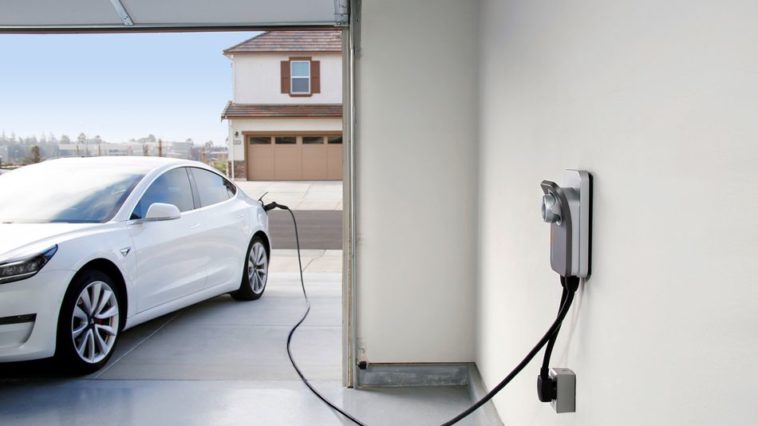Charging your EV at home is super slow. That’s finally changing.

Sixty-four hours. That’s how long a completely depleted Chevy Bolt EV takes to fully charge if you plug the electric vehicle into the same outlet you use to charge your cellphone.
Even if most EVs have increasingly longer range (the Bolt has enough juice for 259 miles, while the Tesla Model 3 is up to 353 miles), the most basic Level 1 charging is painfully slow, even just to top up. To speed things along, more Level 2 options for the home are now coming to market.
This week, Spanish electric charging company Wallbox introduced its first Level 2 home charging kit for U.S. drivers. That’s about eight to 10 times faster than basic, Level 1 home charging and takes about four hours to fully charge a Chevy Bolt and similar cars. That doesn’t sound fast enough if you’re on a road trip, but it’ll recharge the battery enough to calm any fretting about range even if it’s only plugged in for an hour or two.
Level 2 is what most public charging stations offer, although faster DC charging stations are in demand with their quick, 15- to 30-minute “fill-ups.” In that time, a Nissan Leaf or similar car can get back up to 80 percent full from empty. But there are much fewer public DC fast-charging stations. According to the U.S. Department of Energy only about 16 percent of all charging stations are fast ones and most fast chargers are located along highways.
The Pulsar Plus charges EVs faster.

Image: wallbox
Wallbox’s $649 Pulsar Plus smart box with 40 amp output (which has to be professionally installed) is one of a small but growing group of faster charging options for individual homes. All new EVs in the U.S. come with a cable you can plug directly into a wall without an electrician, but none come with a Level 2 setup. A higher output 48-amp Wallbox Pulsar Plus version is coming later this year for $699.
At the end of 2019, charging network ChargePoint released the Home Flex for $699. JuiceBox is another smart home charging kit for Level 2 home charging in your garage. Siemens has a charging kit that connects to your smartphone. But that’s about it. In a call, Wallbox general manager Doug Alfaro called installing a faster home charger “a convenience upgrade” since you can skip public charging stations for your quicker charge.
Alfaro emphasized the flexibility of a smart charger in a video call where he demoed the Pulsar Plus plugged into a Nissan Leaf. Through its app, you can schedule, monitor, and remote control charging.
“It can be 50 times cheaper to use electricity overnight,” he said, hailing the ability to schedule when you want to start charging. Time-of-use rates can make home charging worth it, especially for drivers with utilities that offer cheaper electricity at night or other off-peak hours.
Giovianni Bertolino, head of e-Mobility at renewable energy company Enel X North America, encourages more Level 2 charging, especially for cars sitting parked and plugged in for several hours. “You don’t need fast, expensive DC chargers,” he said in a call. “Level 2 is perfectly fine.” For example, a super-fast 30-minute charging session to get to 80 percent full battery can cost $10 or more. Level 2 home charging for a four-hour full charge is estimated at around $8 in electricity.
Global consulting firm Ernst & Young recently found President Biden’s plan to add 500,000 new EV public charging stations in the U.S. by 2030 might not be enough to meet demand. Its research indicates that may only cover up to 57 percent of what’s needed. That means instead of lining up for a charge, even with the potential new stations, it might still be worth it to bring faster charging to your home.
Jessika Trancik, a professor at the Institute for Data, Systems, and Society at the Massachusetts Institute of Technology, said in a phone call that better home charging options will help speed up widespread EV adoption.
“Having that faster charge does help to build confidence,” she said.
An obvious shortcoming with home charging is that it isn’t available for everyone. So more charging options need to be available for people who don’t have a dedicated, private spot to recharge. For people who live in apartments or rely on street parking, access to faster chargers is crucial to convince them to go electric for their next vehicle.
“But there’s no replacement for charging capabilities when people are home,” Trancik said. “The most convenient option does seem to be when you’re at home, even if that’s in a public spot.”
Published at Sun, 07 Feb 2021 13:00:00 +0000





Comments
Loading…